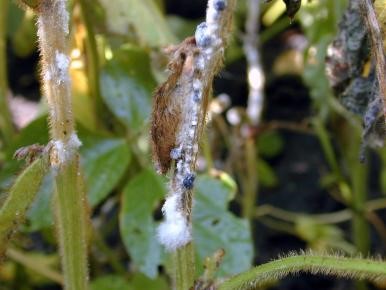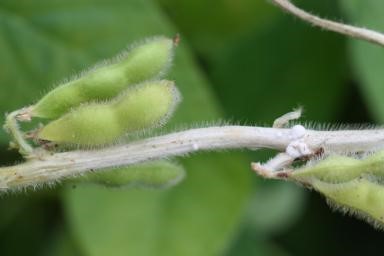
Jun 23, 2023, 9:00 AM
Sclerotinia Stem Rot (White Mold)
SITUATION
Sclerotinia stem rot, more commonly known as white mold, is a common and destructive disease. It is sometimes seen across the U.S. and Canada; however, it is more common in southeast Minnesota, northeast Iowa, and northwest Illinois. It is also prevalent in the Dakotas as well, as it affects many other crops that are grown in the region; such as canola and sunflower. This disease is difficult to manage, and resistant varieties are a partial solution to this perennial problem. Sclerotinia Stem Rot (White Mold)


FACTORS TO CONSIDER
As with all plant diseases, you need a susceptible host, disease pathogen, and favorable environmental conditions. Below are a few conditions that are conducive to experiencing white mold:
- Long wet spells in the summer months
- Thick canopied crop, with lack of airflow through canopy
- Prolonged periods of heavy morning dews
ACTION PLAN
When conditions are favorable for the onset of white mold, there are a few control measures that a grower can utilize to prevent the disease from occurring. One important thing to keep in mind is that there really is no rescue treatment option available, so prevention is the best way to manage the disease.
- In areas that have a history of white mold, utilize wider row spacing.
- Avoid over-fertilization.
- If conditions are favorable, consider using a fungicide labeled for control of white mold at early flowering, and if conditions continue, consider a second application 7-10 days later.
- In fields where irrigation is utilized, limit irrigation as much as possible during the period when the soybeans are flowering to minimize the chance of infection.
- Rotation to small grains or corn can also help break up the severity of the disease, as they are not susceptible hosts.
SUMMARY
To minimize the damage caused by white mold, utilize several of the methods mentioned above. The disease can be very detrimental if favorable conditions are present during the flowering period. Fungicides labeled for white mold work very well when applied at the correct application period.
RESOURCES
Information and photos sourced from Iowa State Research and Extension:
https://crops.extension.iastate.edu/files/resize/article/white_mold-daren_mueller_50-386x290.jpg https://crops.extension.iastate.edu/files/resize/article/wm-stem_bleaching-daren_mueller-384x256.jpg

